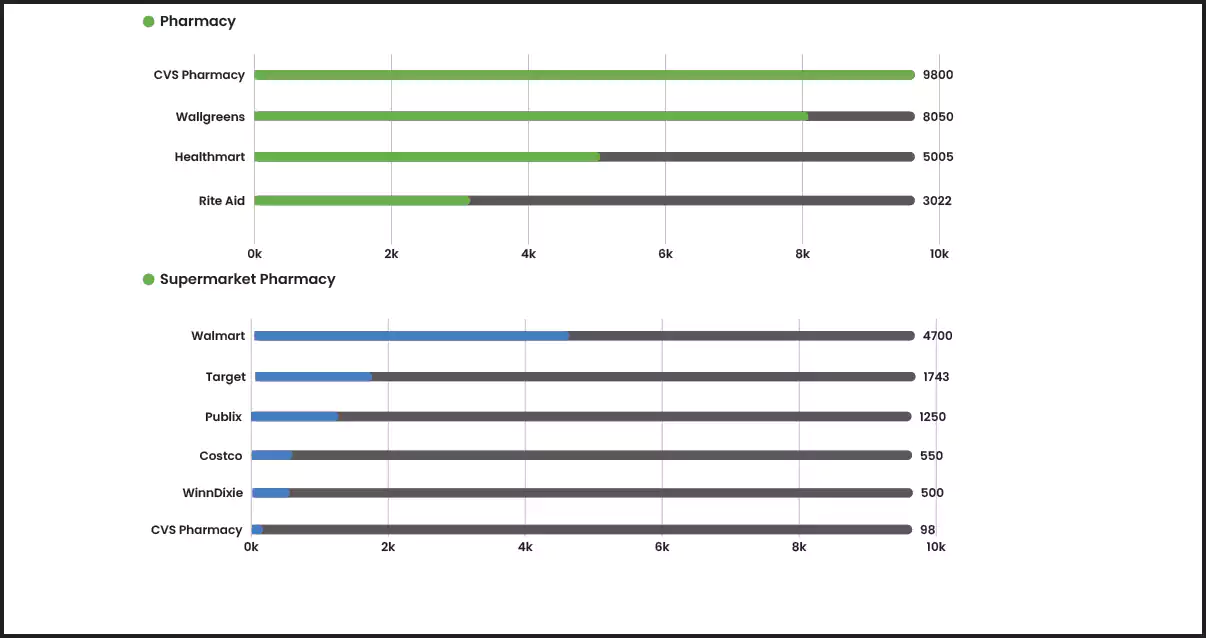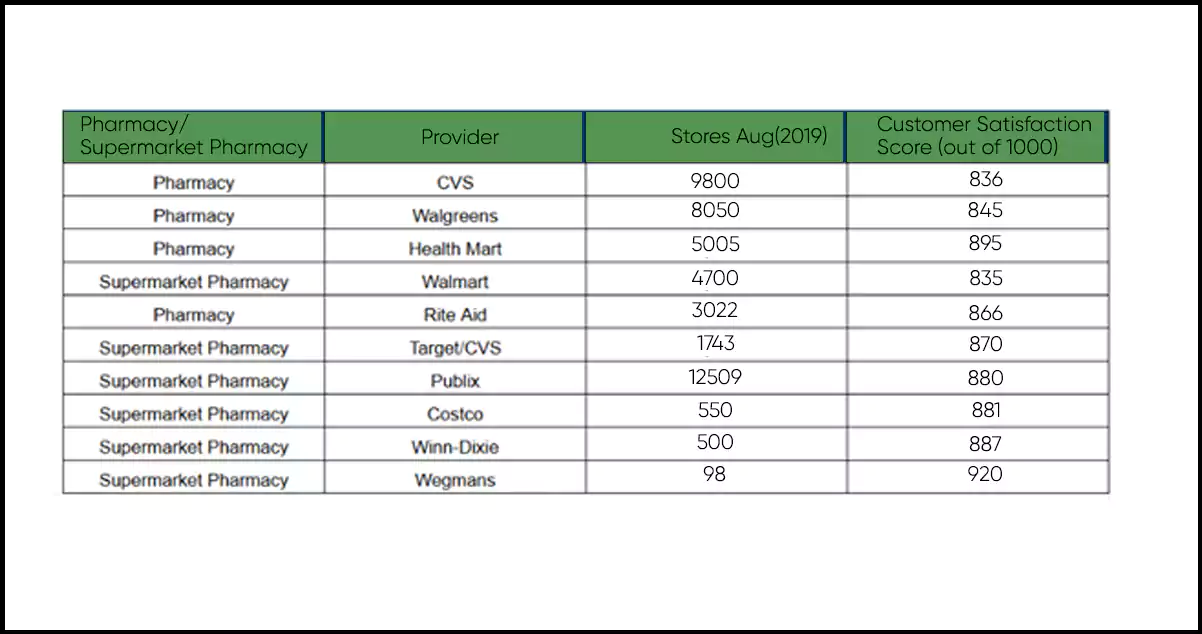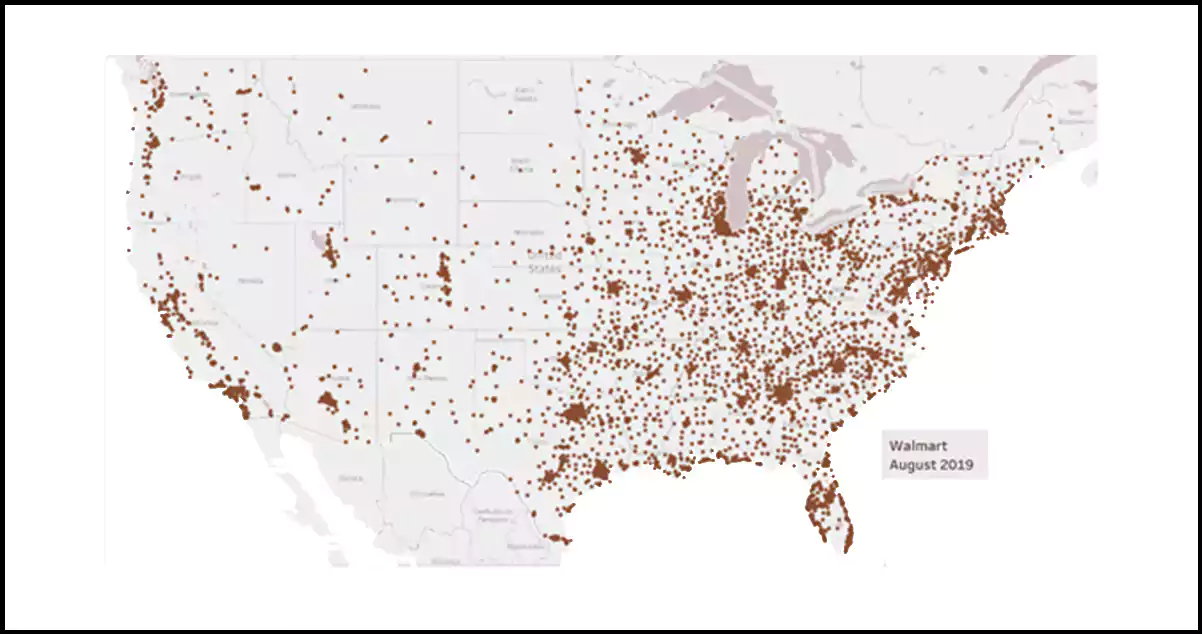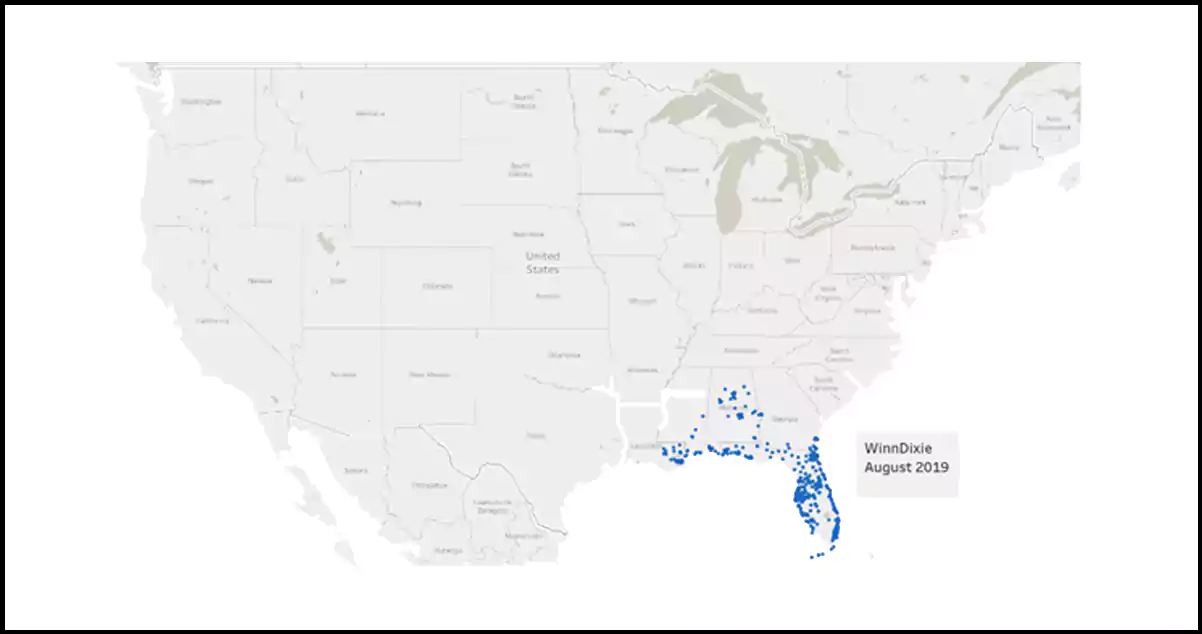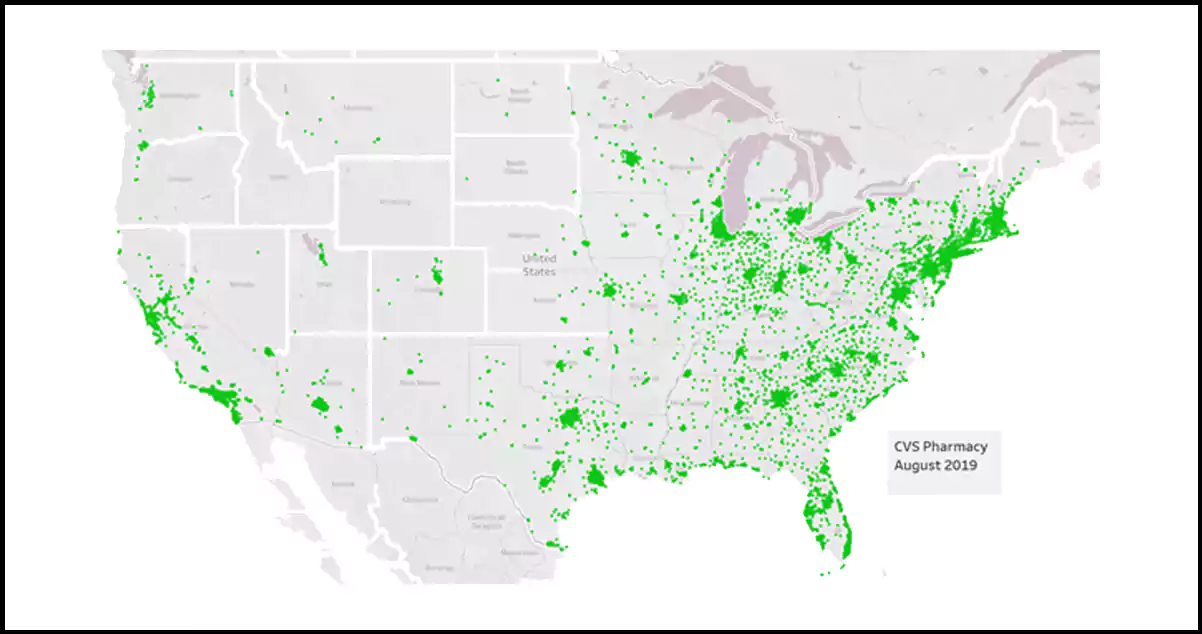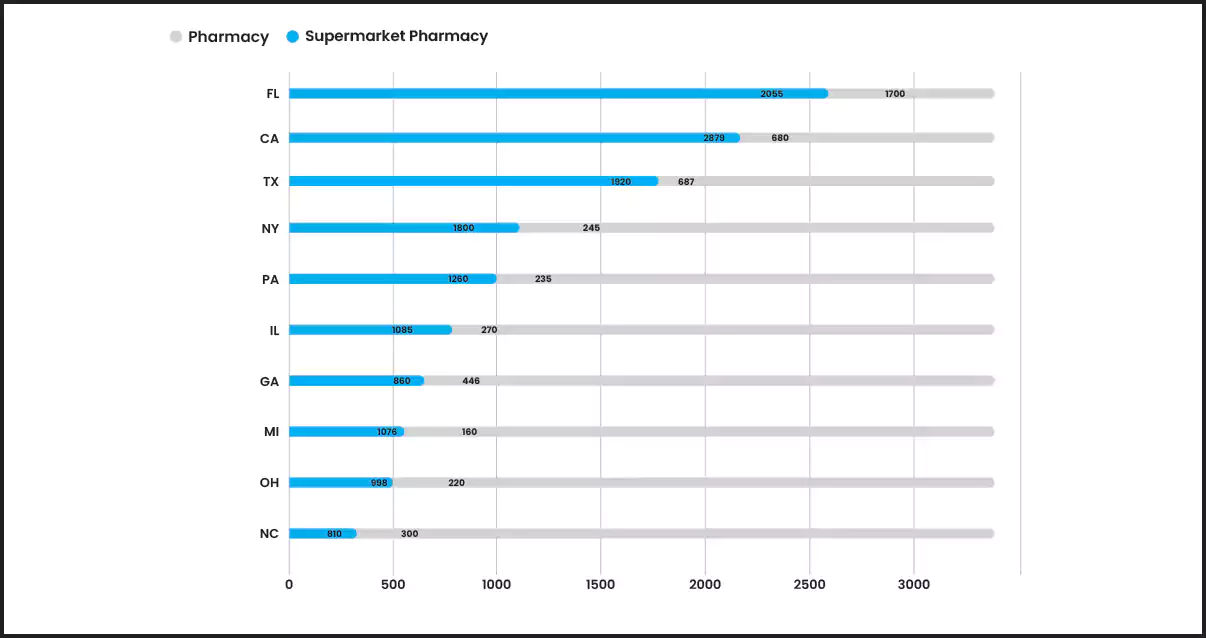How Does Supermarket Pharmacy Data Scraping Reveal Trends in Healthcare and Grocery Industries?
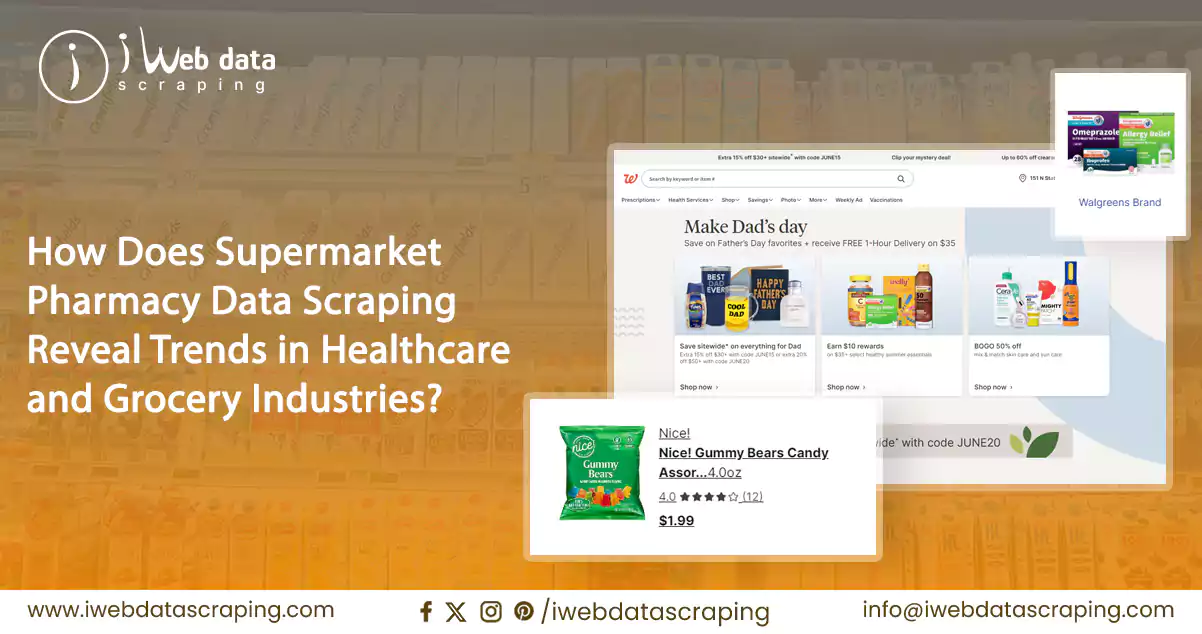
The comparison of pharmacies and supermarket pharmacies in the US reveals exciting insights into their store locations and customer satisfaction levels. With over 26,123 pharmacies and 8,696 supermarket pharmacies in the US, the healthcare market is a significant $3.5 trillion industry. Existing providers are expanding their store networks and enhancing benefits to attract customers, particularly with Amazon’s acquisition of online pharmacy PillPack intensifying competition.
Our supermarket pharmacy data scraping services conducted an analysis focusing on major pharmacy chains like CVS, Walgreens, Health Mart, and Rite Aid, as well as supermarket chains such as Walmart, Costco, Publix, Winn-Dixie, and Wegmans, which also offer pharmacy services. Our healthcare data scraping efforts revealed that supermarkets with pharmacies often have a strategic advantage in terms of store locations, as they are typically located in high-traffic areas, benefiting from the footfall of grocery shoppers.
Moreover, customer satisfaction levels in supermarket pharmacies are higher than in standalone pharmacies, possibly due to the convenience of one-stop shopping. Supermarket pharmacies also benefit from customers’ trust and familiarity with the supermarket brand.
Thus, the data from Supermarket Grocery Delivery Data Scraping indicates that while standalone pharmacies are numerous and offer essential services, supermarket pharmacies have a competitive edge regarding convenience and customer satisfaction. As the industry continues to evolve, understanding these dynamics will be crucial for both types of providers to remain competitive and meet consumers’ changing needs.
The data indicates a notable difference in customer satisfaction between pharmacies and supermarket pharmacies in the US. Despite more standalone pharmacies, supermarket pharmacies outperform them regarding customer satisfaction. It could be attributed to several factors, including the convenience of one-stop shopping and the trusted reputation of supermarket brands.
Supermarket pharmacies strategically position themselves within high-traffic areas, benefiting from the steady flow of customers visiting the grocery section. This aspect of location plays a crucial role in their higher customer satisfaction ratings. Additionally, the supermarket environment may offer customers a more pleasant and familiar setting, contributing to their overall satisfaction.
By utilizing a supermarket pharmacy data scraper, businesses can gather valuable insights into customer satisfaction levels and make informed decisions to enhance their services. Understanding these dynamics can help both types of providers improve their offerings and maintain a competitive edge in the evolving healthcare market.
Key insights from the analysis of Supermarket store locations data in the US reveal exciting trends:
- Publix, Winn-Dixie, and Costco stand out as supermarket chains with pharmacies in all their stores, indicating a commitment to offering healthcare services alongside groceries.
- Health Mart emerges as the sole pharmacy chain with a presence in all states, showcasing a broad geographical reach and accessibility to customers nationwide.
- Walmart is the only supermarket pharmacy in all states, highlighting its widespread availability and convenience for customers nationwide.
- Florida boasts the highest number of pharmacies and supermarket pharmacies, totaling 3,750 locations, reflecting a strong demand for healthcare services in the state.
- Alaska is notable as the only state with more supermarket pharmacies (17) than pharmacies (8), indicating a unique market dynamic in this region.
Overall, these insights shed light on the distribution and reach of pharmacies and supermarket pharmacies in the US, showcasing trends in geographical coverage and market penetration.
Supermarket Pharmacies: A Convenient One-Stop Shop
Supermarkets have transformed into more than just places to buy groceries; they’ve also become convenient destinations for prescriptions. Major grocers now offer pharmacies within their stores, allowing customers to get groceries and medications in one place. This trend saves time and offers added convenience, especially for busy individuals. Supermarket pharmacies often have extended hours compared to standalone pharmacies, making it easier for customers to pick up prescriptions at their convenience. They also integrate with the store’s loyalty programs, offering discounts and rewards for prescription purchases. Additionally, they offer services like flu shots and health screenings, enhancing the overall customer experience.
Comparison of Pharmacy Locations: Walmart vs. Costco
When comparing Walmart and Costco pharmacy locations, Walmart emerges as the more prevalent option, with 99.3% of its 4,700 stores hosting a pharmacy. In contrast, with 550 stores, Costco boasts a pharmacy presence in all its outlets. Despite Walmart’s wider availability, Costco’s pharmacies achieve higher customer satisfaction, scoring 881 compared to Walmart’s 836. It suggests that while
Walmart provides more widespread access to pharmacies, Costco’s focus on quality and service leads to higher customer satisfaction. The contrasting approaches of these retail giants highlight the different strategies employed to meet customer needs, with Walmart emphasizing accessibility and Costco prioritizing customer experience.
Comparison of Pharmacy Locations: Publix vs. Winn-Dixie vs. Wegmans
Publix, Winn-Dixie, and Wegmans are prominent grocery chains in the eastern United States, each with a distinct regional focus. Publix and Winn-Dixie concentrate on the southeast, while Wegmans serves the northeast region. Both Publix and Winn-Dixie excel in providing pharmacy services, with each of their 1,250 and 500 stores, respectively, offering a pharmacy. Wegmans, although having fewer stores with pharmacies (98 out of 101), still maintains an impressive 96% coverage.
Despite Wegmans’ lower number of pharmacy locations, it boasts the highest customer satisfaction rating among the three, scoring an impressive 920. Publix and Winn-Dixie also perform well in customer satisfaction, scoring 880 and 887, respectively. The high percentage of pharmacies in these grocery stores underscores the recognition by significant grocers of the importance of offering healthcare products. This strategic move reflects a growing trend among grocers to provide a one-stop shopping experience that includes the option to purchase prescriptions.
The Evolution of Pharmacies: From Medications to Groceries
Pharmacies in the US have expanded their offerings beyond medications to include groceries, leading to a significant presence across the country. Supermarkets have also joined this trend by incorporating pharmacies into their stores. This shift has resulted in pharmacies such as CVS becoming significant players in the grocery market. In 2017, CVS surpassed Publix and Target to become the 5th largest grocery chain in the US. This evolution highlights the changing landscape of retail, where pharmacies have transformed into convenient one-stop shops for customers, offering a wide range of products and services beyond just medications.
Comparison of CVS and Walgreens Store Locations
CVS (9,800) and Walgreens (8,050) are two significant pharmacy chains in the US. Walgreens trails CVS in terms of number of stores, with a customer satisfaction score of 845 compared to CVS (836).
In 2015, CVS acquired 1,743 Target pharmacies and changed them to CVS Pharmacy. These pharmacies scored higher (870) on customer satisfaction than CVS pharmacies (836).
Alaska, Hawaii, Montana, and North and South Dakota are the only states without Walgreens, while CVS has no stores in Idaho and Wyoming.
Comparison of Health Mart and Rite Aid Store Locations
Health Mart stands out with 5,005 stores, being the sole pharmacy chain with a presence in every state in the US. In contrast, Rite Aid operates 3,022 stores, primarily concentrated along the East and West coasts, with minimal presence in Central America. In 2017, Walgreens acquired 1,945 Rite Aid stores, rebranding them as Walgreens pharmacies. Health Mart excels in customer satisfaction, scoring 895, compared to Rite Aid’s 866. This indicates Health Mart’s commitment to customer service, which contributes to its widespread presence and favorable reputation among
Top 10 States with Pharmacies and Supermarket Pharmacies
California Leads in Pharmacies, While Florida Tops in Supermarket Pharmacies
The healthcare and grocery industries are evolving to meet the demands of health-conscious consumers. Pharmacies are expanding their offerings beyond prescriptions, transforming into health destination centers. Many now employ dietitians and nutritionists, and some even offer organic food.
Walmart is expanding its healthcare footprint with Health Clinics. Walgreens is innovating with “health guides” and partnering with Kroger to launch “Kroger Express” grocery sections. CVS plans to convert 1,500 pharmacies into HealthHub locations by 2021, focusing on selling healthier foods.
These trends suggest a convergence of healthcare and grocery, focusing on holistic health and wellness. Retailers seek to provide more than just products, services, and experiences promoting healthier lifestyles.
Discover unparalleled web scraping service or mobile app data scraping offered by iWeb Data Scraping. Our expert team specializes in diverse data sets, including retail store locations data scraping and more. Reach out to us today to explore how we can tailor our services to meet your project requirements, ensuring optimal efficiency and reliability for your data needs.
TAG: #SupermarketPharmacyDataScraping,
#SupermarketGroceryDeliveryDataScraping,
#ExtractSupermarketStoreLocationsData,
#ExtractSupermarketPharmacyData,
#SupermarketPharmacyDataScraper,
#SupermarketPharmacyDataCollection,
#SupermarketPharmacyDataExtraction,
#ScrapeSupermarketPharmacyData,

